The Razer Edge isn’t Razer’s first gaming handheld. That honor goes to the original Razer Edge, a large experimental gaming PC tablet that I reviewed a decade ago. Handheld gaming hardware has come a long way since then, and so has Razer, a company known for stellar laptops and gaming peripherals. I wish I could say the Razer Edge was as good as most serious gamers might hope it would be, but this first effort seems meager after being spoiled by Switch and Steam Deck.
I watched my 14-year-old son play Elden Ring on the Razer Edge one morning, and I asked him how it felt. He’s already beaten Elden Ring and keeps playing it on the Xbox Series X. He told me he wouldn’t go back to the Razer Edge to play for several reasons. First, the controller quality. He felt it was a big step back from playing on an Xbox controller, and he isn’t wrong.
The Razer Edge is an Android handheld, a 6.8-inch phone-type mini tablet that comes with a clip-on USB-C controller. Razer already has Kishi game controllers for phones, which are similar to the Backbone One and can turn phones into little gaming handhelds for around $100. The Edge is basically that same type of controller, bundled with its own mini tablet. At $400 for the Wi-Fi version, the price isn’t awful. You could think of this as paying $300 more for a 6.8-inch AMOLED-dedicated mini tablet, which is equipped with a brand-new Qualcomm Snapdragon G3X gaming-focused chipset.
I’m reviewing a Verizon version with 5G that costs more. It’s $600, or $360 if you sign up for a $10/month 5G wireless plan. I briefly tried the Razer Edge in Las Vegas earlier this year, but here are my thoughts after playing at home for longer.


Playing Elden Ring via local streaming to the Razer Edge. Note the large bezels because the aspect ratio is different from the Edge’s longer display.
Scott Stein/CNETIt’s not a Steam Deck
If you think you’re getting a Steam Deck-alike here, well… you’re not. The Edge is pure Android and runs apps off the Google Play store. You’ll have a standard selection of Android games that you’d also get on your phone, many of which work with the Edge controller scheme. You could use the Edge mini tablet to access other Android apps, like Gmail, Marvel Snap or Chrome.
You can run streaming games on the Edge, similar to your phone or tablet. I locally streamed Xbox games and played Xbox Game Pass games streaming from the cloud. There’s Steam Link local-game streaming (if you have a gaming PC) and Nvidia GeForce Now cloud-streaming game support, too. Verizon anticipates you’ll use the Edge to stream games on the go, via 5G.
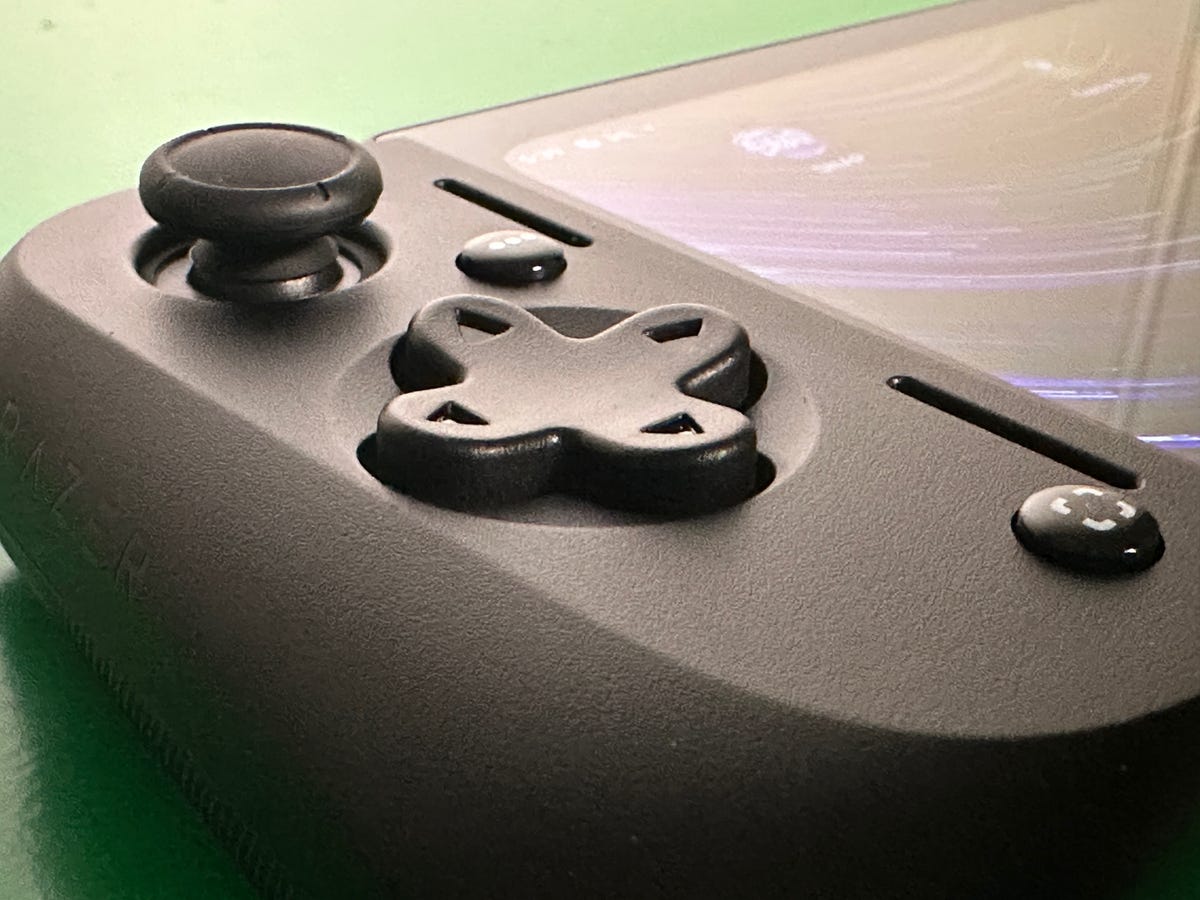

The Razer Edge has a d-pad, dual analog sticks, triggers and bumpers. But the controls feel no different than the clip-on Kishi controllers for phones, and a step below dedicated Xbox game controllers.
Scott Stein/CNETWhile the Edge can decently run the streaming games I’ve played on the Xbox so far, it doesn’t feel as impressive as I’d hoped for. The controller seems a step below normal game console controls. The triggers and buttons are fine, but shallower and more hollow-feeling. Also, although Razer supports haptics on these controllers, I have yet to play a game that can use them (and haptics are a big deal for me).
The Edge’s display, while beautifully vivid, is long like a phone. PC and console games end up pillar-boxed, shrinking the playable space and leaving extra-large bezels on the sides. It turns what seems like a big screen into one not quite so big — and for console games designed for big screens, it makes text and menus super small and hard to read.
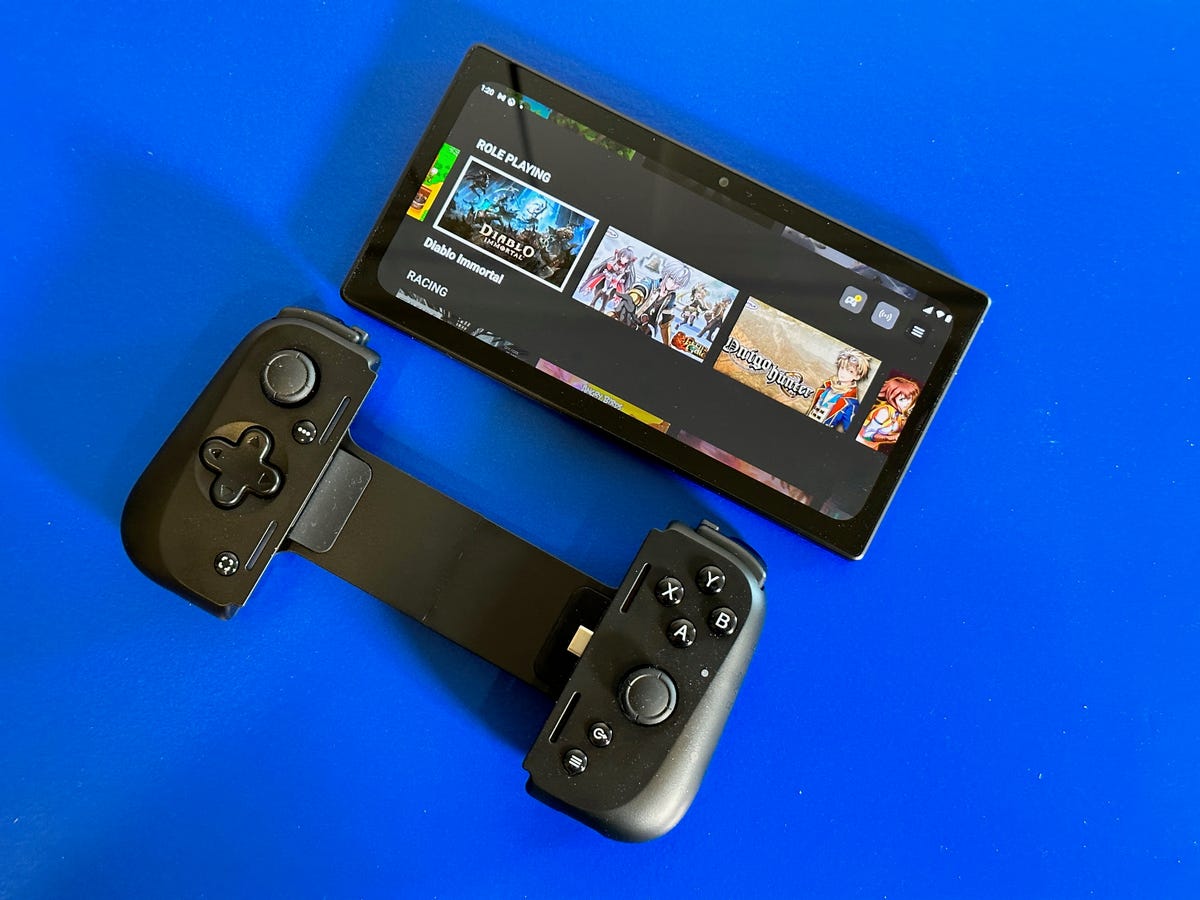

The Razer Edge’s Kishi controller detaches, but you need it to be connected via USB-C directly to the Edge to play games, unlike the Switch Joy-Cons.
Scott Stein/CNETIt’s not a Switch
The Edge also lacks a few things that I’ve taken for granted on the 6-year-old Nintendo Switch. The Switch can easily dock with a TV to become a regular sofa console, or it can be a handheld. It also has detachable wireless controllers and a kickstand. The Edge, meanwhile, is designed to be purely a handheld. And its controller, which stretches and plugs into the tablet, doesn’t work wirelessly. There’s no kickstand, either.
I would love a more modular design — for instance, if I wanted to prop it up on a table with a kickstand or dock. The handheld design is OK, and after all, the Steam Deck does the same (though the Steam Deck has an optional dock like the Switch). But the Steam Deck’s controls feel more refined. The Edge has the limits of a handheld-only design with few perks.
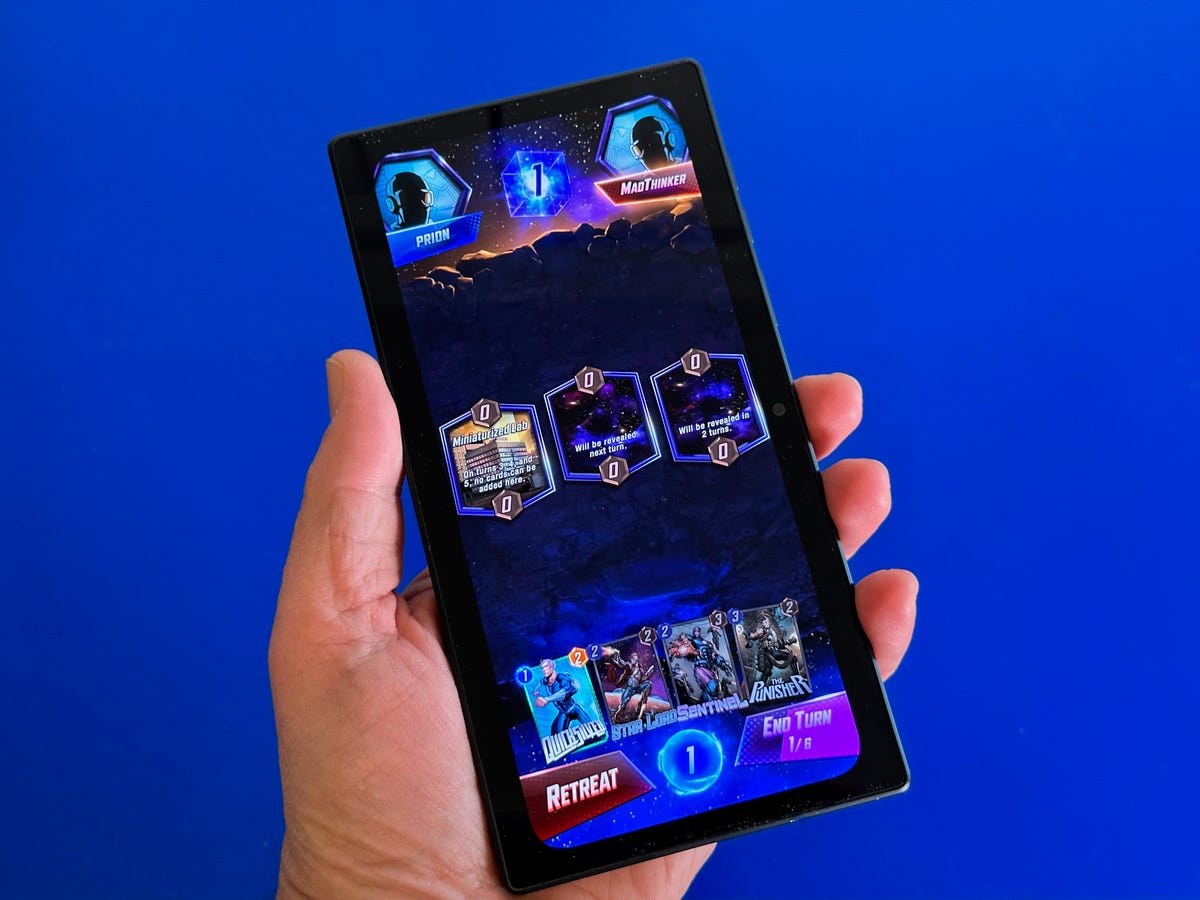

The Razer Edge tablet could be used to play other Android games and apps: Marvel Snap, for instance. It’s got a touchscreen.
Scott Stein/CNETIt’s not a phone
Also, it’s good to remember that the Edge isn’t a phone, even if it resembles one. The 5G model can connect to cellular, and you could certainly try video chat or other calls with it. However, the Edge only has one camera (front-facing), and it lacks a fingerprint sensor.
It also has some pretty noisy fans in the back that purr while the system is on, meaning it definitely isn’t water-resistant. The fans kick in quite a bit, even when the system seems to be in sleep mode. I’ve found battery life on standby can disappear fast, but then again, this is with 5G on.
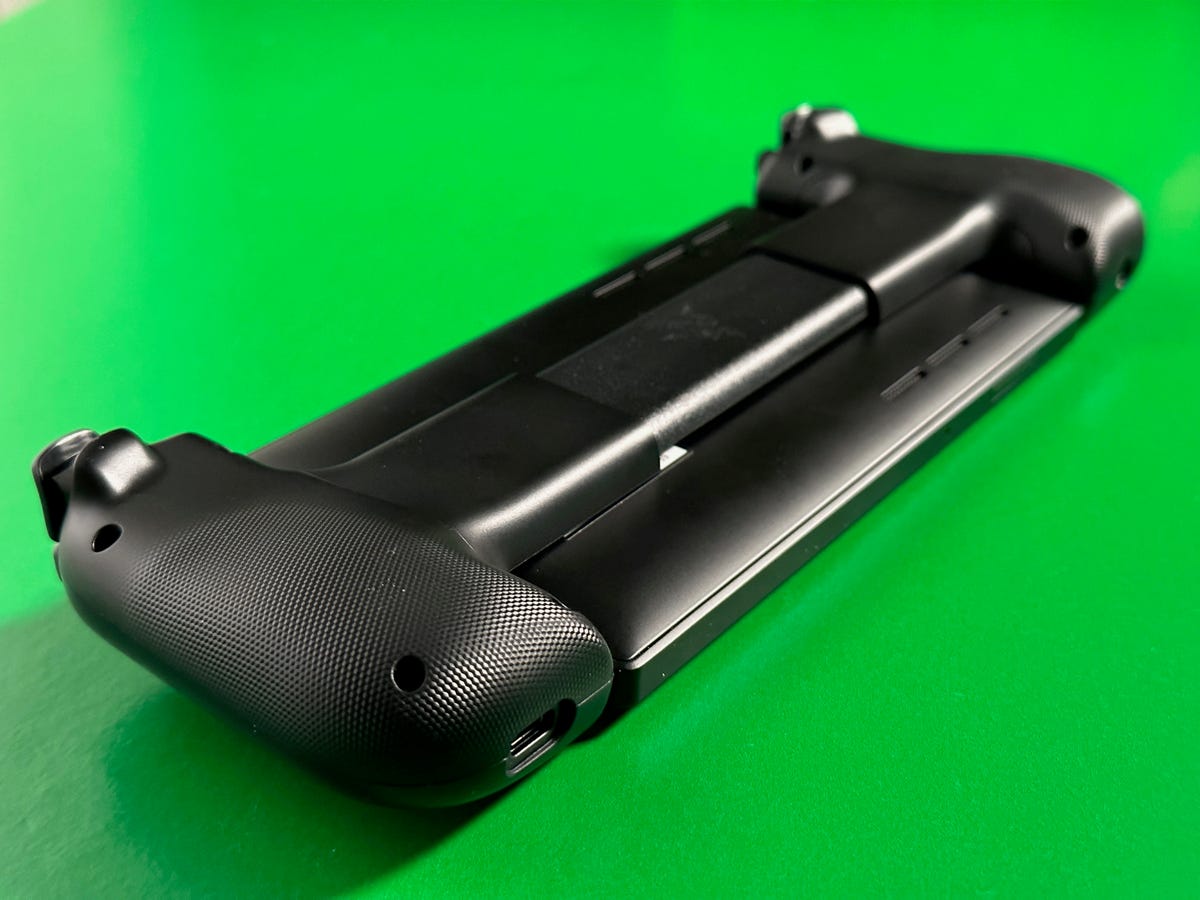

The back of the Razer Edge. Note the fan vents. The cooling fans kick in quite a bit and can be a bit noisy.
Scott Stein/CNETStill, you could easily use the Edge as a small handheld tablet for reading, videos, mail, social media and whatever else. It’s a fully equipped smart device, although the 128GB onboard storage means you’ll probably want to add a microSD card. I haven’t felt the need to do so yet, mostly because all the games I’ve wanted to play are streaming.
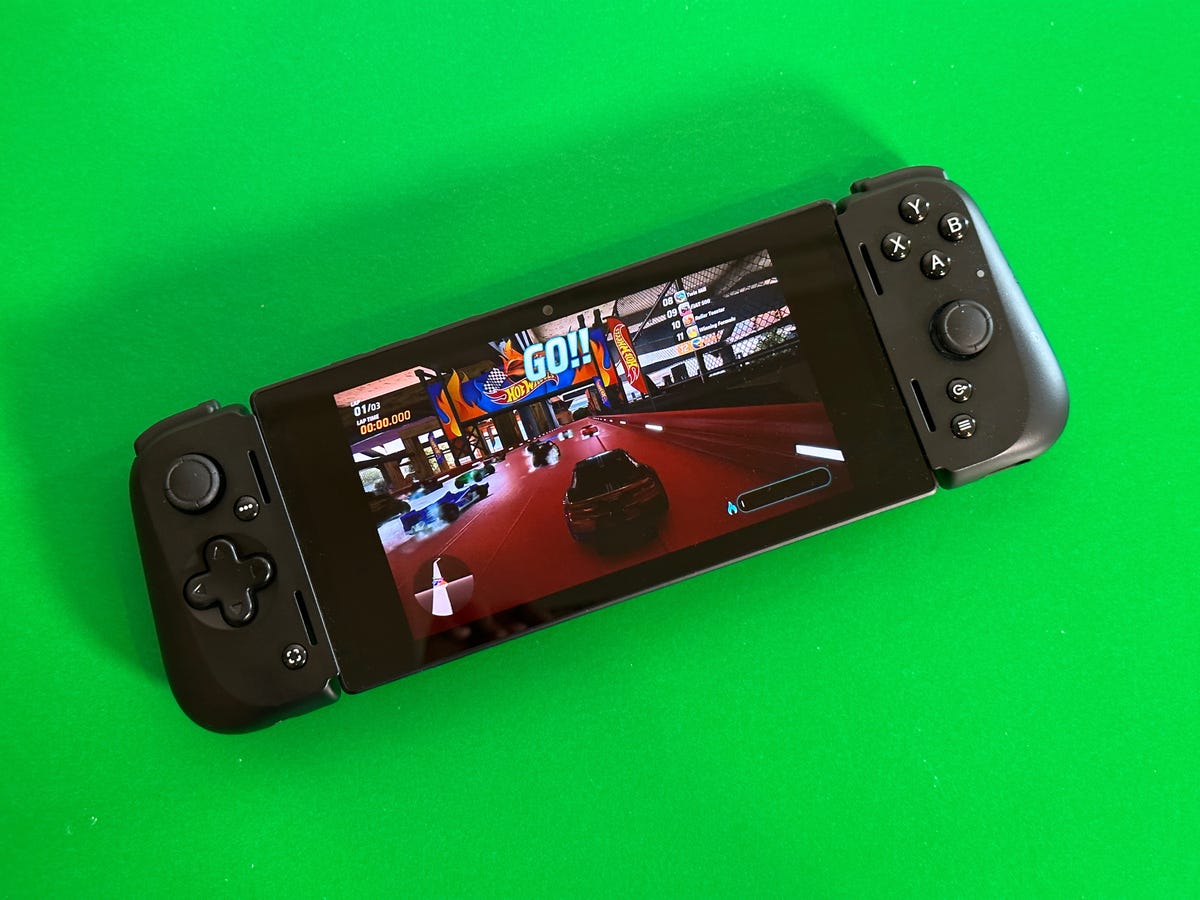

For a future Razer Edge, I’d love a better controller and a screen that’s optimized to TV-like aspect ratios.
Scott Stein/CNETA good idea, but an imperfect landing
I’m only harping on the downsides because Razer has excellent game controller products, and the company can clearly make fantastic hardware. I’d love to see more thought put into how a handheld could be not only serviceable, but designed perfectly, with more modularity and a display with a better aspect ratio.
There’s also a weird element with the target audience and software library. The Switch leans on Nintendo’s eShop, and the Steam Deck has Steam. The Razer Edge has a split focus on Android games, Steam Link, Xbox Game Pass and other streaming options like Nvidia GeForce Now. Much like the Logitech G Cloud, another Android device aimed at streamers, it feels a little redundant or superfluous.
While the Edge is functional enough, if you own a newer smartphone, you could simply buy a controller accessory instead. The Razer Edge doesn’t excel in any one area for me, and that’s why I’d like to see the overall idea pushed further. Whether Razer and Qualcomm will choose to do that remains to be seen.
